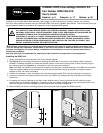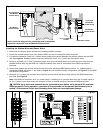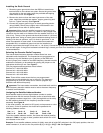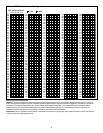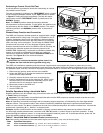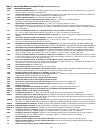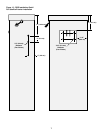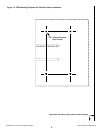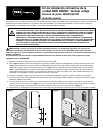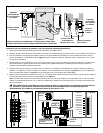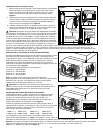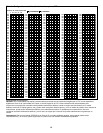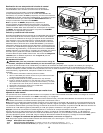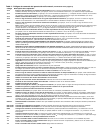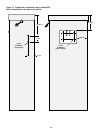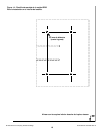
Performing a Control Circuit Self Test
A self-test feature is provided to check the functionality of various
key satellite control circuits.
The test is initiated by positioning the TEST/RESET switch, located
on the frequency decoder module, to the
TEST position as shown
in
Figure 9. Testing will begin immediately. The test will repeat
continuously until the
TEST/RESET switch is positioned to the
NORMAL position.
Note: The RESET position resets the frequency decoder
microprocessor to factory defaults. To take affect, the satellite must
be powered up with the switch in the
RESET position. The switch
should be placed in the
NORMAL position after 15 seconds of
operation.
Remote Relay Function and Connection
The RDR unit frequency decoder module is equipped with a single-
pole, double-throw 5.0 amp relay. The relay is intended for use in
irrigation installations which have two different irrigation systems.
Upon transmitted command from the base station or a hand-held
radio, the relay can be energized. This will stop all OSMAC RDR
functions and turn power on to the alternate irrigation system.
Another command can be sent to the RDR to turn off the relay, de-
energizing the alternate system and returning control to the
OSMAC RDR. Additionally, a command is provided to disable this
feature so it cannot be accidentally activated and a different
command to enable the feature. See the
Command Code list for
specifics. See
Figure 10 for the terminal locations.
Fuse Replacement
CAUTION: For continued protection against risk of fire,
replace the fuse with the same type and rating only.
The RDR unit transformer assembly and the terminal output boards are equipped with fuses to protect the unit from
damage due to power surges and excessive current draw from the station terminals. Before replacing the fuse, check for
the probable cause, such as a shorted or improperly connected station or common wire, then replace the fuse as follows:
1. Disconnect the primary power source to the satellite.
2. Unlock the RDR unit to access the transformer assembly
and/or terminal output boards.
3. Carefully remove the blown fuse from its retaining clip.
4. Install a replacement fuse to the retaining clip. Use a 2 amp
slow-blow fuse for the transformer assembly and a 4 amp
slow-blow fuse for the terminal output boards.
5. Reconnect power to the RDR unit.
6. Test for proper operation
7. Lock the RDR unit.
Satellite Operations Using a Hand-Held Radio
Satellite operations can be initiated using a hand-held radio with DTMF keypad. The operation command codes are listed
in
Table 2 below and page 6.
Important: The base station transmitter/hand-held radio and the RDR frequency decoder module must be set to the
same frequency to enable communication.
Note: All operation commands must begin with the following keypad sequence:
*
9 followed by the three-digit satellite
address number. The command code is then entered, followed by additional digits which represent selected stations
and/or run time values. The
# key is pressed at the end of the command sequence. All station numbers from 1–9 must be
entered with a preceding
0; i.e., station 1 is entered as 01.
Example: Confirm communication to the satellite by issuing a manual station start command as follows: Press
*
9,
the three-digit satellite address code, command code
7521 01 (station 1) and #. Check for sprinkler operation. To step
forward through the stations, press
*
1; to step back through the stations, press
*
2. To terminate the test, press
*
9, the
three-digit satellite address code and command code
7520 #.
Table 2 - Hand-Held Radio Command Codes (continued on p.6)
Note: When issuing commands from the base station keypad, use the dash (–) key in lieu of the star (
✱
) key.
Code Operation Description
7510 Turns off individual stations; e.g., 7510 01 02 11 turns off stations 1, 2 and 11.
7511 Turns on individual stations; e.g., 7511 01 02 11 turns on stations 1, 2 and 11.
Figure 9
COM
12 345
24 V a.c.
4A Slow-Blow Fuse
Figure 11
Figure 10
5
Reset
Test
Normal



